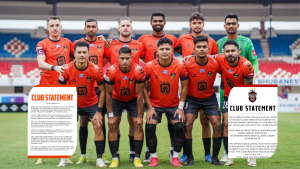Royal Challengers Bengaluru finally gave their fans at the Chinnaswamy Stadium something to cheer about, securing a crucial victory against Rajasthan Royals. While multiple factors contributed to RCB’s success, one unsung hero has quietly been making waves — wicketkeeper Jitesh Sharma and his razor-sharp instincts with the Decision Review System (DRS).
Jitesh has been a pillar of confidence and clarity, often convincing captain Rajat Patidar to take reviews that have turned the game in RCB’s favor. His accuracy and conviction have become indispensable to the team’s resurgence.
Take the match against Mumbai Indians at the Wankhede Stadium. Josh Hazlewood delivered a masterful in-between length ball to Ryan Rickelton, which tailed away slightly after pitching on leg stump. Rickelton, attempting a cross-batted swipe, misjudged the length and was struck on the knee roll. Patidar hesitated, unsure whether to challenge the umpire’s not-out decision. It was Jitesh who stepped in, urging the review despite Hazlewood’s own doubts. Jitesh’s call was spot on — the ball had indeed pitched on leg and was clipping the stumps, a game-changing moment.
In the clash against Rajasthan Royals, the stakes were even higher. With RR needing 18 runs off 12 balls, Dhruv Jurel was in devastating form, having scored 47 off 32. Hazlewood bowled a wide yorker, and Jurel missed the attempted squeeze. Jitesh appealed immediately, but Hazlewood seemed uncertain. Once again, Jitesh insisted on the review. UltraEdge confirmed a faint bottom edge as Jurel tried to open the off-side, leading to a crucial breakthrough that swung the match in RCB’s favor.
To delve deeper into the dynamics of DRS within a team, I spoke with former India wicketkeeper Deep Dasgupta.
“For LBWs, three key players are involved,” Deep explained. “The bowler judges the point of impact, the keeper is often blind to it, and the point or square leg fielder assesses the height. But for caught-behind decisions, the keeper is almost always the best judge.”
So, what sets some keepers apart in this crucial role?
“Some have an innate sense of where the ball is going,” Deep said. “Confidence is also vital — it’s a big call to make. The keeper’s relationship with the captain and his role in the team play a significant part. If the keeper sees himself as integral, he’ll back himself to speak up.”
Breaking down the Jurel dismissal, Deep highlighted three layers: “There’s the technical aspect — who judges what; the non-technical — including the keeper’s positioning and confidence; and the tactical. The Jurel review was a perfect blend of all three. Tactically, RCB had two reviews left and nine balls to go. Jurel was dangerous, and the review was a calculated risk that paid off.”
What fuels Jitesh’s unwavering confidence, and why does Patidar trust him so implicitly?
“Jitesh and Rajat go way back,” Deep revealed. “They share the same coach, the same batch, and have grown up together. They spend a lot of time off the field, which builds trust. That’s why Jitesh is vocal, and Rajat backs him without hesitation.”
“For captains who field in the deep, like Rajat, having a reliable wicketkeeper for tight calls is crucial. Jitesh has been playing that role to perfection,” Deep concluded.
While Jitesh Sharma may not always grab the headlines, his sharp judgment and confident calls have been instrumental in RCB’s success. In a tournament where margins are razor-thin, he’s proven that a wicketkeeper’s role extends far beyond gloves and catches.








